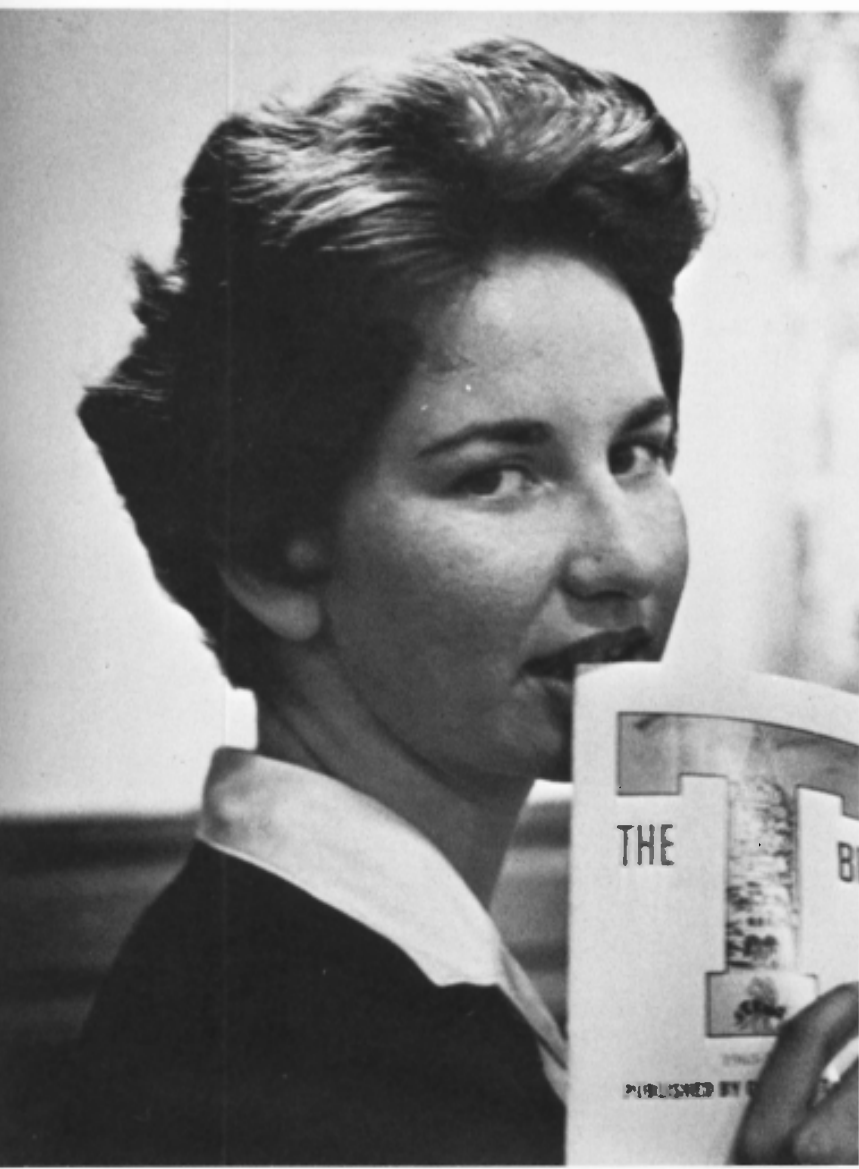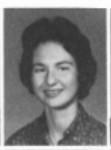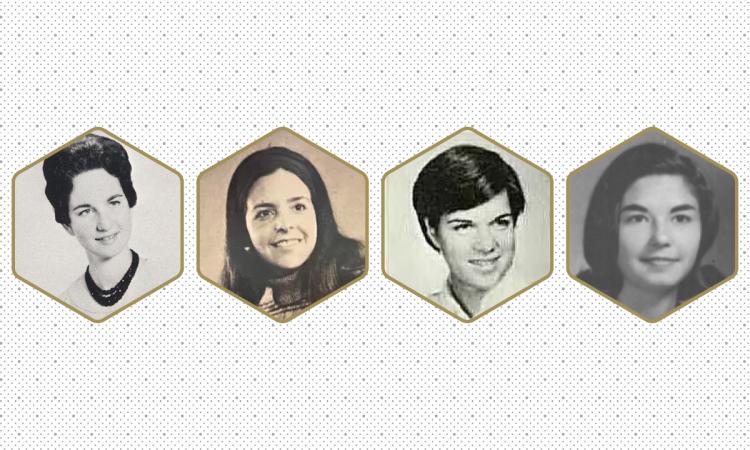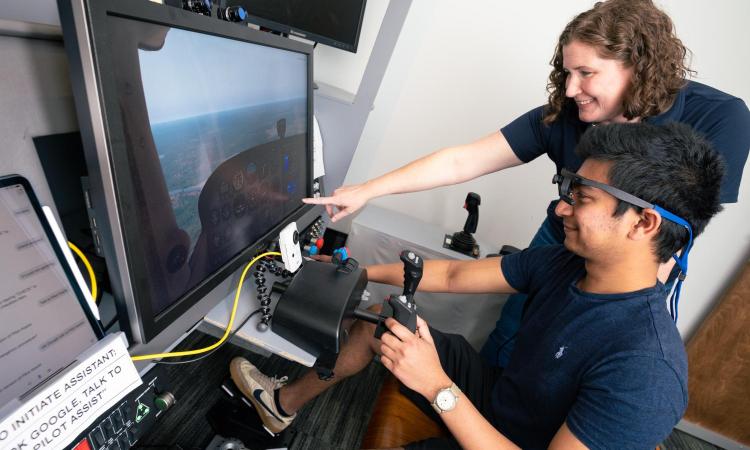AE Highlights First Woman Triple Jacket in Aerospace Engineering at Georgia Tech.
Mary A. Wright, AE 1964, M.S. AE 1965, Ph.D. AE 1970, née Jackson, blazed a trail as the first woman to earn a Ph.D. in aerospace engineering at Georgia Tech; the road wasn’t always easy. She didn’t let the opinions of others or her humble beginnings hinder her from achieving her goals. She earned three degrees from Tech and used her education to pursue an academic career and inspire future generations.
Sometimes, You Have to Encourage Yourself
Wright became interested in aerospace engineering because her older brother, Don Jackson, worked as an assistant to civil engineers as they built the Arnold Engineering Development Center (AEDC) in Tullahoma, Tennessee, where she grew up. AEDC served as an aerospace research facility, and Tullahoma became a hub for engineers. However, she had to be a self-starter because school counselors didn’t guide or support her to pursue engineering like they did the boys, even though she was good at math and science.
She graduated from high school and headed to David Lipscomb College in Nashville, majoring in pre-engineering, but had to leave after one year for financial reasons. The determined young woman decided to earn enough money to attend a different school. She had to work for over a year as an engineering aid at AEDC to afford tuition. At that time, the only women there were engineering aides who drew graphs, ran Friden calculators, and prepared figures for the engineers’ papers.

Mary A. Jackson and her work for the T Book.
Cutting Down Thistles and Thorns on the Path
Following her plan to the letter, she found her way to Tech because she wanted to study aerospace engineering specifically, which was a major at Tech. With the help of her high SAT scores and school grades, she enrolled in 1961.
Once at Tech, she quickly realized she was the only female undergraduate at the Daniel Guggenheim School of Aerospace Engineering (AE). She hadn’t visited the campus and didn’t know it was predominantly male. Unfortunately, women weren’t welcomed by all of the male students and a few faculty members, so it was a little more challenging.
“I was resented by many of my fellow students, and I think I was discounted by some of the faculty. I didn't overcome the resentment, but I did show the faculty that I was competent,” Wright stated.
She was determined to be the best in her class because she needed a scholarship to continue her studies, and as a result, she often made the Dean’s list. The hard worker secured a Tech scholarship to cover the last two years of her bachelor’s degree. She spent a summer working at AEDC as an engineering aid despite Tech's rule against women participating in co-ops because they didn’t want to take responsibility for them. Even though she wasn’t in a co-op, her work was very closely aligned with the co-op work that the men were doing, so she was able to work around the barrier. She graduated from Tech in 1964 with her bachelor’s degree and went to Langley Research Center or NASA Langley in Virginia to analyze data for the summer.
My family was immensely proud when I earned my Ph.D., but they worried that I had gone too far. I was the first in my family to earn a B.S., much less a Ph.D.
Mary A. Wright
It’s About the Work Around
In the fall, Wright returned to Tech with the financial support of the Amelia Earhart Fellowship, which was awarded to women pursuing Ph.D.s in aerospace engineering or space sciences. She also held assistantships to cover the costs. She decided to pursue her Ph.D. and earn her master’s degree along the way.
“I felt that a graduate degree would open academic career options. I stayed at Georgia Tech because I was already there and knew and was known by the faculty.”
Her interests were in fluid mechanics, and she was respected for her research and work on jets in crosswinds.
“I studied modeling idealized analyses of the effects of a jet in a crossflow on the surface from which the jet issued. I would have been much more interested in the experimental work related to that topic, but that part of the project was given to a male student,” she shared.
Her three faculty advisors helped her develop her research. She also felt more respected academically as a graduate student than during her undergraduate studies. Two of the three advisors didn’t have a Ph.D., which was also a publishing challenge. She worked around that problem and published with the Allison Division of General Motors Corporation and Westinghouse.
While working towards her Ph.D., she not only earned her master’s degree but also found the love of her life, Terry Wright, Ph.D. 1969, a graduate student in AE. They married in 1966 while still pursuing doctoral degrees and were married until his recent passing. They were both successful in this achievement.
She worked for the Allison Division of General Motors in Indianapolis and then for Westinghouse Fluid Systems Lab in West Lafayette, Indiana. Then, she decided to teach at the university level.
Wright became a tenured associate professor in the Department of Mechanical Engineering Technology at Purdue University. She later taught at the School of Mechanical Engineering at the University of Alabama, Birmingham (UAB).
“I had an opportunity to teach in the Department of Mechanical Engineering Technology, which did not hold summer classes. That seemed a good way to fill my role as a parent and keep up with my technical career. In hindsight, it was a mistake. There was not enough pressure to publish. I thoroughly enjoyed the teaching and the students, but it was a poor career decision. I earned tenure very quickly, but getting that was not representative of the usual struggles to excel in an academic career.”
“The students and their curiosity and energy were my favorite part of teaching.”
Her best advice to students is to find a mentor. She regrets not making more of an effort to seek and use advice.

Mary A. Jackson
Enjoying the Fruits of Her Labor
Eventually, Wright moved away from engineering and pursued creative endeavors while her husband retired from UAB.
“I drifted from engineering and became an interior decorator. I participated in several ‘decorator showhouses” in Birmingham. Creative pursuits claimed more of my interest as time passed. I have also written a historical novel, under the pen name M.A. Wright, and have outlined a sequel,” Wright shared. “I enjoy using my imagination; engineering and teaching allowed me to do that, and so did my other pursuits.”
Wright is retired, living in Johnson City, Texas, near her son, who works at the Lyndon Johnson National Historical Park.
Related Stories:
First AE Alumnae Share the Secrets of Their Success
The Daniel Guggenheim School of Aerospace Engineering salutes the first women at Georgia Tech to earn graduate degrees in aerospace engineering: Laurie L. Baker (BSAE 1967, MSAE 1968), Joyce E. Carpenter (BSAE 1972, MSAE 1978), C. Anne Patterson (BSAE 1971, MSAE 1975), and Mary A. Wright (BSAE 1964, MSAE 1966, and Ph.D. AE 1970).
Seven Decades in the Making: How Women Are Leading the College into the Future
AE Associate Chair for Research Karen Feigh is another product of Georgia Tech’s programs who returned for a fruitful research and teaching career.

